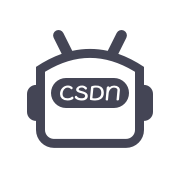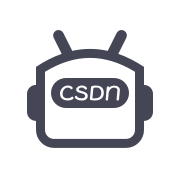-
I want to make a Unity work with a traditional cultural theme. What do I need to learn?
After clicking copy, the C know experience page will open
-

If your direction is Unity, you need to learn the following:
-
Basic knowledge of Unity: including the use of the Unity editor, basic concepts such as game objects, components, scenes, and scripts.
-
3D modeling and animation: Learn to use 3D modeling software such as Blender, Maya, etc. for modeling, texturing, animation production, etc.
-
Physics engine: Understand Unity's built-in physics engine, and master physical concepts such as rigid bodies, collision detection, force, gravity, and friction.
-
Particle system: Learn to use Unity’s built-in particle system to create special effects such as rain, snow, fire, and explosions.
-
UI design: Understand Unity's UI system and know how to make buttons, sliders, text boxes and other UI elements.
-
Script programming: Master the C# programming language, learn to use Unity’s API for script programming, and implement game logic and interaction.
-
VR/AR technology: If you are interested, you can learn Unity’s VR/AR technology to implement virtual reality or augmented reality applications.
When implementing games with traditional cultural themes, it is also necessary to have an in-depth understanding of relevant cultural backgrounds and elements, such as traditional architecture, clothing, utensils, customs, mythology, etc., in order to present a true cultural atmosphere in the game.
After clicking copy, the C know experience page will open
 |
|
-
-

What interactions are needed to produce Unity works related to traditional culture?
After clicking copy, the C know experience page will open
-

Producing Unity works related to traditional culture requires the following interactions:
-
Touch interaction: Players can interact with items in the game by touching the screen, such as touching traditional cultural artworks, touching traditional cultural buildings, etc.
-
Drag-and-drop interaction: Players can interact by dragging items in the game, such as dragging traditional cultural items for placement, dragging traditional cultural buildings for modeling, etc.
-
Click interaction: Players can interact by clicking on items in the game, such as clicking on traditional cultural items to display, clicking on traditional cultural buildings to enter, etc.
-
Voice interaction: Players can interact with items in the game through voice, such as controlling items in traditional cultural scenes through voice commands, unlocking traditional cultural puzzles through voice, etc.
-
Gesture interaction: Players can interact with items in the game through gestures, such as gestures to control traditional cultural dances, gestures to unlock traditional cultural puzzles, etc.
After clicking copy, the C know experience page will open
 |
|
-
-

How to implement Unity camera movement and rotation
After clicking copy, the C know experience page will open
-

The specific methods to implement Unity camera movement and rotation are as follows:
- Camera movement:
a. Create an Empty Object and name it "Main Camera Controller" or something similar.
b. Make the camera a child object of the "Main Camera Controller" and ensure that the camera's position is (0,0,0).
c. Add a script (Script) on the "Main Camera Controller" to control the movement of the camera. The script should include the following:
i. A variable is used to store the movement speed of the camera.
ii. A method to detect player input and move the camera based on the input.
d. Test the script in the game scene to ensure that the camera can move based on player input.
- Camera rotation:
a. Add a script on the "Main Camera Controller" to control the rotation of the camera. The script should include the following:
i. A variable is used to store the camera rotation speed.
ii. A method to detect player input and rotate the camera based on the input.
b. Test the script in the game scene to ensure that the camera can rotate based on player input.
Precautions:
-
When moving and rotating the camera, consider the player's perspective and the size of the game scene.
-
When rotating the camera, pay attention to the camera's field of view to avoid problems with blind spots or excessive field of view.
-
When moving and rotating the camera, consider the performance and smoothness of the game to avoid lags or delays.
After clicking copy, the C know experience page will open
 |
|
-

Is it possible to move and rotate objects without the Rigidbody component?
After clicking copy, the C know experience page will open
-

Theoretically, the movement and rotation of the object can be achieved by directly modifying the Transform component of the object, but this method is not advisable because it does not comply with the laws of physics and may lead to some unreasonable results. Adding the Rigidbody component can make the object controlled by the physics engine, which is more in line with the physical laws of the real world and can simulate the movement of the object more accurately. Therefore, if you need to realize the movement and rotation of objects, it is recommended to add the Rigidbody component.
After clicking copy, the C know experience page will open
 |
|
-

Specific code to implement the movement and rotation of an empty object
After clicking copy, the C know experience page will open
-

Here is a sample code using the Unity engine to realize the movement and rotation of empty objects.
copy
using UnityEngine; public class MoveAndRotate : MonoBehaviour { public float moveSpeed = 5f; // 移动速度 public float rotateSpeed = 180f; // 旋转速度 private void Update() { // 按下W键向前移动 if (Input.GetKey(KeyCode.W)) { transform.Translate(Vector3.forward * moveSpeed * Time.deltaTime); } // 按下S键向后移动 if (Input.GetKey(KeyCode.S)) { transform.Translate(Vector3.back * moveSpeed * Time.deltaTime); } // 按下A键向左移动 if (Input.GetKey(KeyCode.A)) { transform.Translate(Vector3.left * moveSpeed * Time.deltaTime); } // 按下D键向右移动 if (Input.GetKey(KeyCode.D)) { transform.Translate(Vector3.right * moveSpeed * Time.deltaTime); } // 按下Q键向下移动 if (Input.GetKey(KeyCode.Q)) { transform.Translate(Vector3.down * moveSpeed * Time.deltaTime); } // 按下E键向上移动 if (Input.GetKey(KeyCode.E)) { transform.Translate(Vector3.up * moveSpeed * Time.deltaTime); } // 按下左箭头键向左旋转 if (Input.GetKey(KeyCode.LeftArrow)) { transform.Rotate(Vector3.up, -rotateSpeed * Time.deltaTime); } // 按下右箭头键向右旋转 if (Input.GetKey(KeyCode.RightArrow)) { transform.Rotate(Vector3.up, rotateSpeed * Time.deltaTime); } } }This script can control the movement and rotation of empty objects through the keyboard. Among them,
Input.GetKey()the method is used to detect whether the button is pressed,transform.Translate()the method is used to realize movement, andtransform.Rotate()the method is used to realize rotation. The movement and rotation speed can be adjusted according to actual needs.After clicking copy, the C know experience page will open
 |
|
-

5 free questions per day, your number has been used up~
Unity traditional cultural interaction and camera movement and rotation
Guess you like
Origin blog.csdn.net/qq_51943845/article/details/129850263
Recommended
Ranking